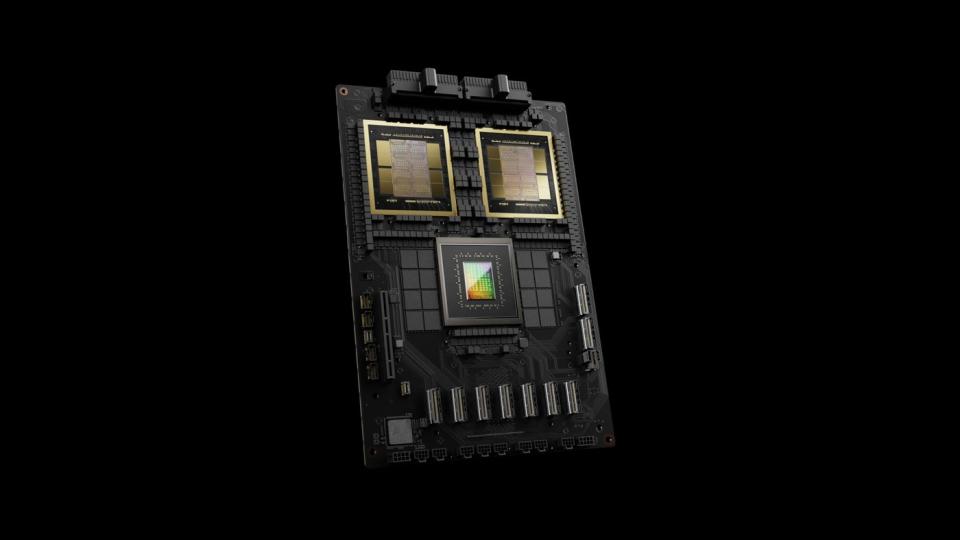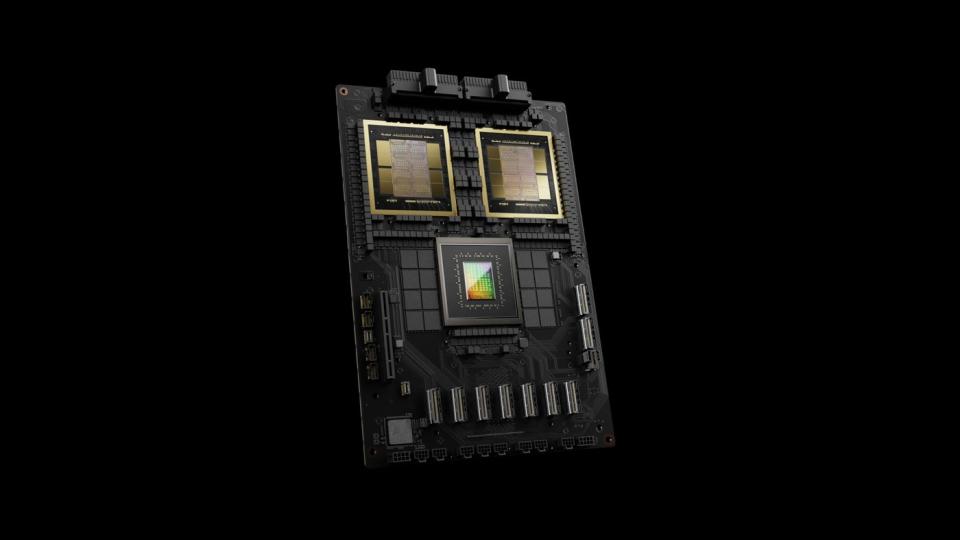There’s no getting around it: The advent of artificial intelligence (AI) early last year has been a boon to chipmaker Nvidia (NASDAQ: NVDA). The company’s graphics processing units (GPUs) have long been the gold standard for video games, data centers, and early branches of AI.
The uptake of generative AI kicked off in earnest in early 2023, making Nvidia the hottest ticket in town. Shares are up nearly 700% during that time as the company controls an estimated 92% of the data- center chip market — where most generative AI lives — according to IoT Analytics. Those gains haven’t all been in a straight line, however, as Nvidia stock plunged as much as 23% during the last three weeks of July.
Behind the slump are fears that the adoption of AI might soon trail off. After the company generated triple-digit revenue and profit growth over the past year, investors have begun to wonder if the end was in sight. The evidence has begun to pile up and provides a clear answer to the quintessential investor question: Is it too late to buy Nvidia stock?

The question of demand
Generative AI requires a great deal of computational horsepower to run the large language models (LLMs) that underpin the technology. That, combined with the massive amounts of data necessary, makes AI largely the purview of the world’s largest tech companies, which are also Nvidia’s biggest customers. These tech giants have begun to report their quarterly results, providing investors with insight into the state of AI adoption — and the evidence is compelling.
During Alphabet‘s (NASDAQ: GOOGL) (NASDAQ: GOOG) second-quarter earnings call, CEO Sundar Pichai said of AI, “We are at an early stage of what I view as a very transformative area … aggressively investing upfront in a defining category.” Indeed, the company’s capital expenditures (capex) of $13.2 billion were higher than many anticipated, and Alphabet plans capex spending of roughly $12 billion per quarter for the remainder of the year. The spending was “overwhelmingly” spent on the servers and data centers needed for AI.
For its fiscal 2024 Q4 (ended June 30), Microsoft (NASDAQ: MSFT) also admitted to going on an AI-centric spending spree, with capex of $19 billion. CFO Amy Hood noted that “cloud and AI-related spending represents nearly all of our total capital expenditures.” Hood went on the say that fiscal 2025 capex is “expected to be higher than fiscal year 2024.”
Meta Platforms (NASDAQ: META) spent more than $8.1 billion on capex in Q2 and is now predicting full-year spending of $37 billion to $40 billion, with “significant capex growth in 2025 to support our AI research and product development efforts,” accoring to CFO Susan Li.
Nvidia’s biggest customers
These capex spending numbers and the accompanying management commentary make clear that Big Tech plans to continue spending big on AI. Furthermore, the fact that much of this spending will be devoted to servers and data centers suggests that Nvidia will be the beneficiary of much of this spending.
While Nvidia doesn’t provide the identities of its biggest customers, Wall Street has done some sleuthing. Analysts at Bloomberg and Barclays parsed the numbers and concluded that Nvidia’s four largest customers — responsible for roughly 40% of its revenue — are:
-
Microsoft: 15%
-
Meta Platforms: 13%
-
Amazon: 6.2%
-
Alphabet: 5.8%
Three of the four have been clear about their AI spending, and by the time you read this, Amazon’s results will be out, and I have no doubt its spending on AI will be equally robust.
The proof is in the pudding
The past year has been a whirlwind for Nvidia investors. After generating triple-digit growth last year, the company followed that up with record results to kick off the current year. For fiscal 2025’s Q1 (ended April 28), Nvidia delivered record revenue that grew 262% year over year to $26 billion, fueled by record data-center revenue of $22.6 billion, up 427%. Profits also exploded higher as diluted earnings per share (EPS) of $5.98 surged 629%.
Nvidia is scheduled to report its Q2 results after the market close on Aug. 28, and if the commentary provided by its Big Tech customers is any indication, Nvidia should have another strong showing up its sleeve.
The company’s forecast is calling for revenue of $28 billion, which would represent year-over-year growth of 107%, with a commensurate uptick in profitability. It’s worth noting that Nvidia has a history of eclipsing its own guidance, so the results could conceivably be higher.
Finally, at roughly 38 time forward earnings, Nvidia trades at a slight premium, but given the company’s triple-digit growth, that’s not surprising.
In my mind, the preponderance of the evidence is clear: Nvidia stock is still a buy.
Should you invest $1,000 in Nvidia right now?
Before you buy stock in Nvidia, consider this:
The Motley Fool Stock Advisor analyst team just identified what they believe are the 10 best stocks for investors to buy now… and Nvidia wasn’t one of them. The 10 stocks that made the cut could produce monster returns in the coming years.
Consider when Nvidia made this list on April 15, 2005… if you invested $1,000 at the time of our recommendation, you’d have $669,193!*
Stock Advisor provides investors with an easy-to-follow blueprint for success, including guidance on building a portfolio, regular updates from analysts, and two new stock picks each month. The Stock Advisor service has more than quadrupled the return of S&P 500 since 2002*.
*Stock Advisor returns as of July 29, 2024
John Mackey, former CEO of Whole Foods Market, an Amazon subsidiary, is a member of The Motley Fool’s board of directors. Suzanne Frey, an executive at Alphabet, is a member of The Motley Fool’s board of directors. Randi Zuckerberg, a former director of market development and spokeswoman for Facebook and sister to Meta Platforms CEO Mark Zuckerberg, is a member of The Motley Fool’s board of directors. Danny Vena has positions in Alphabet, Amazon, Meta Platforms, Microsoft, and Nvidia. The Motley Fool has positions in and recommends Alphabet, Amazon, Meta Platforms, Microsoft, and Nvidia. The Motley Fool recommends the following options: long January 2026 $395 calls on Microsoft and short January 2026 $405 calls on Microsoft. The Motley Fool has a disclosure policy.
Is It Too Late to Buy Nvidia Stock? Evidence Is Piling Up That Provides a Clear Answer was originally published by The Motley Fool
EMEA Tribune is not involved in this news article, it is taken from our partners and or from the News Agencies. Copyright and Credit go to the News Agencies, email news@emeatribune.com Follow our WhatsApp verified Channel





